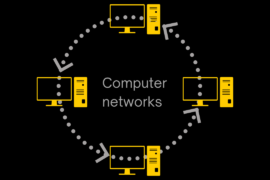In this post you will learn what is IP addresses, versions of IP addresses, types of IP addresses, and classes of IP addresses with detailed explanations.
So let us start learning all the things one by one.
What is an IP address?
IP address stands for “Internet Protocol Address”. An IP address is a unique number provided to each and every device on the internet.
It is in the form of an integral number which is separated by a dot (.)
For Example: 192.168.10.25
Versions of IP address
There are two versions of IP address
- IPv4 (Internet Protocol version 4)
- IPv6 (Internet Protocol version 6)

IPv4
- The length of the IPv4 is 32 bits.
- There are total 4 Octets and the length of each octet is 8 bits (4×8 = 32 bits).
- The range of IPv4 is 0 to 255.
- We can make 4 billion Unique IP addresses Using IPv4 (232).
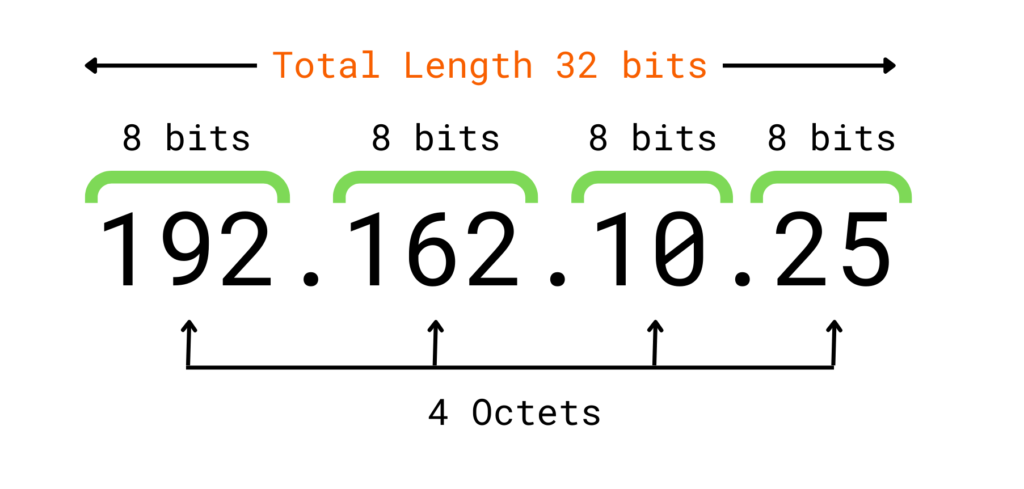
Ipv6
- The length of the IPv6 is 128 bits.
- There are total 8 Octets and the length of each octet is 16 bits (8×16 = 128 bits).
- The range of IPv6 is 0 to FFFFFF (65535).
- We can make 340 trillion Unique IP addresses Using IPv6 (2128).
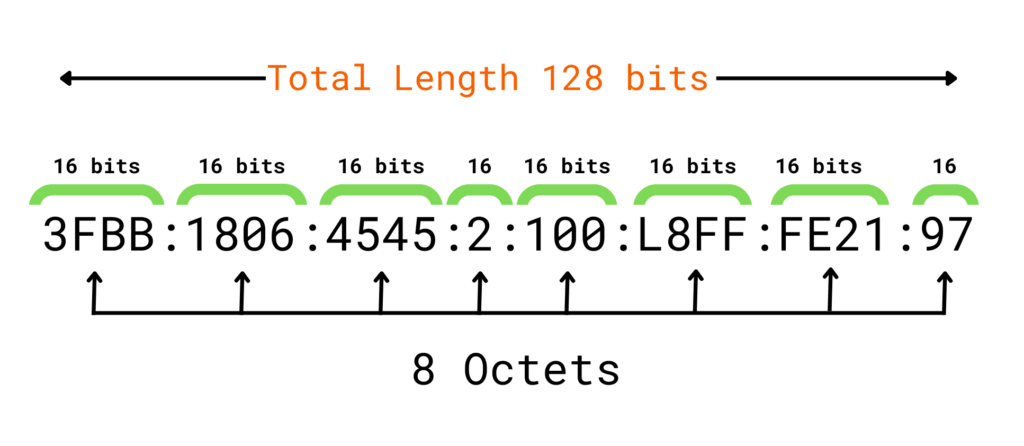
Diffrence between IPv4 and IPv6
| IPv4 | IPv6 |
| The length of the IPv4 is 32 bits. | The length of the IPv6 is 128 bits. |
| There are total 4 Octets and the length of each octet is 8 bits (4×8 = 32 bits) | There are total 8 Octets and the length of each octet is 16 bits (8×16 = 128 bits). |
| The range of IPv4 is 0 to 255. | The range of IPv6 is 0 to FFFFFF (65535). |
| We can make 4 billion Unique IP addresses Using IPv4 (232). | We can make 340 trillion Unique IP addresses Using IPv6 (2128). |
| IPv4 is a numeric address separated by a dot (.) | IPv6 is an alphanumeric number separated by a colon (:) |
| IPv4 has total five classes | It doesn’t have any class |
| Example:- 192.162.10.25 | Example:- 3FBB:1806:4545:2:100:L8FF:FE21:97 |
Classes of IPv4
There are Five classes of IPv4 and they are as follows:
- Class A
- Class B
- Class C
- Class D
- Class E
Class A
The range of class A IP addresses is 0 to 126.
If the range of First Octet is between 0 to 126 then it is considered as Class A IP address.

Octet of IP address is divided into two parts
- Network ID (1)
- Host ID (0)
Class A has 1 Network ID and 3 Host IDs.
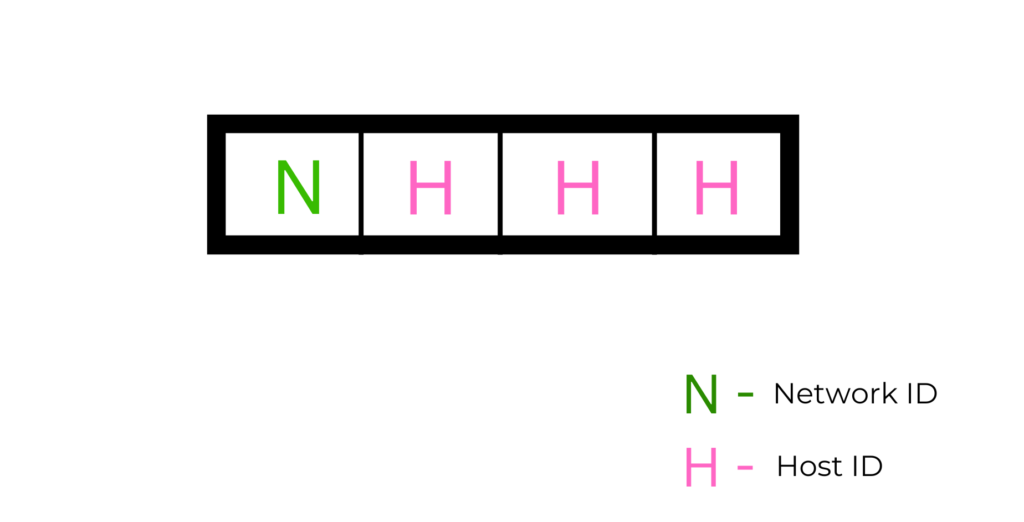
NOTE: 127 IP address is a private IP address given for experiment in your computer (127 IP address is a local Server ).
Class B
The range of class B IP addresses is 128 to 191.
If the range of First Octet is between 128 to 191 then it is considered as Class B IP address.

Class B has 2 Network ID and 2 Host IDs.

Class C
The range of class C IP addresses is 192 to 223.
If the range of First Octet is between 192 to 223 then it is considered as Class C IP address.
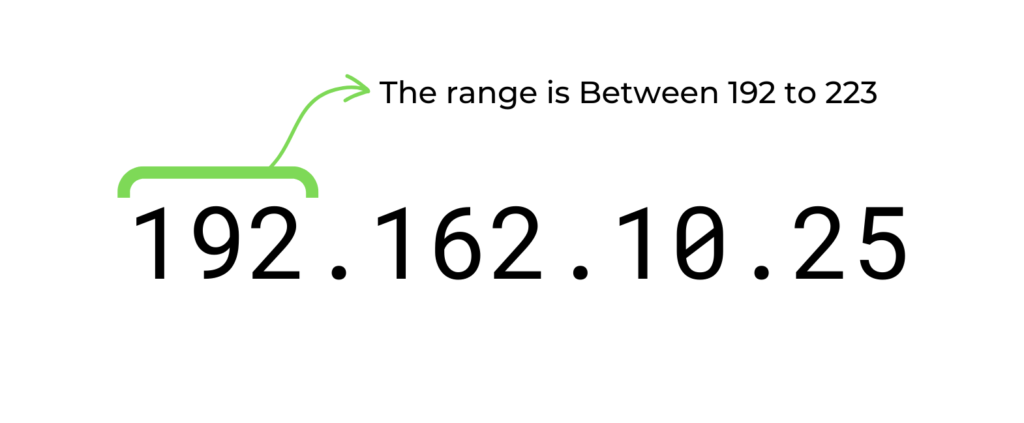
Class C has 3 Network ID and 1 Host IDs.

Class D
The range of class D IP addresses is 224 to 239.
If the range of First Octet is between 224 to 239 then it is considered as Class D IP address.
Class D is a reserved class and it is used for multicasting.
Class E
The range of class E IP addresses is 240 to 255.
If the range of First Octet is between 240 to 255 then it is considered as Class E IP address.
Class E is a reserved class and it is used for Research purposes.
Summary
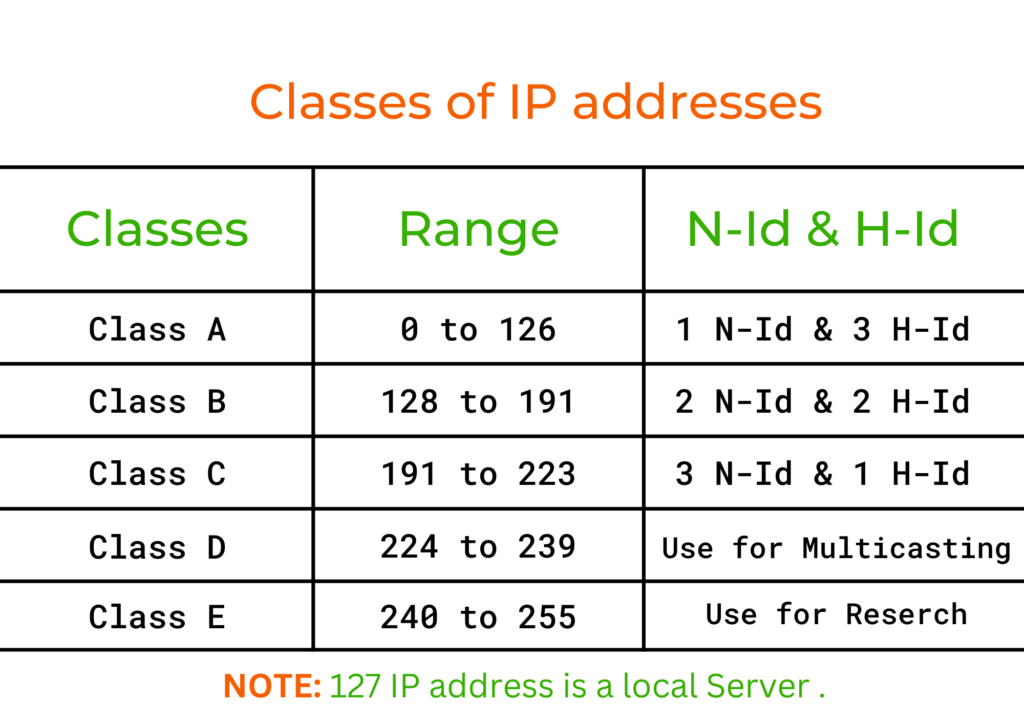
Types of IP address
There are Four Types of IP addresses
- Public IP
- Private IP
- Static IP
- Dynamic IP
Public IP
- Public IP is used to communicate in WAN (wide area network) & it is assigned by the ISP (Internet Service Provider).
- Public IP is recognized over Internet.
- Public IP is unique over the globe.
Private IP
- Private IP is used to communicate in LAN (local area network).
- Private IP is not recognized over Internet.
- Private IP is not unique over the globe. It is unique within the same network.
Static IP
- A Static IP address is simply an address that doesn’t change.
- Static IP is suitable for dedicated services such as mail, FTP and VPN servers.
Dynamic IP
- Dynamic IP is a temporary IP address that is assigned to a device when it is connected to a network.
- Dynamic IP is suitable for large networks that require internet access to all devices.
- We use dynamic IP addresses because IPv4 doesn’t provide enough static IP addresses to go around.
FAQ
What is an IP address?
IP address stands for “Internet Protocol Address”. An IP address is a unique number provided to each and every device on the internet.
How many Versions of IP address?
There are two versions of IP address
IPv4 (Internet Protocol version 4)
IPv6 (Internet Protocol version 6)
How many Classes of IP addresses?
There are Five classes of IP address (IPv4) and they are as follows:
Class A, Class B, Class C, Class D, Class E
How many types of IP address?
There are Four Types of IP addresses
Public IP, Private IP, Static IP, Dynamic IP
Related Topics:
What is computer network? explain in detail



